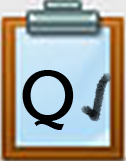Q3 Craft Your Story: Hook Your Audience
Now that you have selected a topic, it's almost time to craft your story. Can you capture the audience right at the beginning of your story?
Yes. Use a hook!
A hook refers to the opening line, sound, or scene in a story that is created to immediately grab the audience's attention and make them want to keep listening or see what happens next. This is often done through a mysterious situation, surprising event, quote, catchy sound or visual effect, or question that sparks curiosity.
Learn about hooks and have fun thinking of ways you can use a hook for the story you are creating.
Some Tips for creating a hook to engage your audience:
- Keep it short and clear.
- Make sure it introduces or leads into your main story topic.
- Avoid starting with a definition or narrating the text that may appear on the opening.
Consider how the beginning 30 seconds of the short digital story of Krakatoa captures your attention. Does it make you want to watch all of it?
Krakatoa (0:33)
Direct link (5:56)
Have fun! Think about a hook for your topic.
- Start by asking a thought-provoking question, encouraging them to think and connect with your topic. Example: "Have you ever wondered what it would be like to live in the ocean?"
- Use a surprising fact or statistic about your story that might pique their interest.
Example: "Did you know that more people have access to a mobile phone than a toilet?" - Tell a short, exciting anecdote related to your topic. Example: "Last summer, I volunteered to be a playground worker and lost track of one of the students. Guess what happened!"
- Create a vivid scene to lead into your topic. Example: "Last weekend my dog escaped from the leash and dashed out into the busy street, I ran after him, and remember hearing car horns and screeching brakes."
- Use a quote that relates to your message. Example: As Taylor Swift said, "No matter what happens in life, be good to people. Being good to people is a wonderful legacy to leave behind."
Competencies & Standards
MITECS Michigan Integrated Technology Competencies for Students, and
2. Digital Citizen
c. Demonstrate an understanding of and respect for the rights and obligations of using and sharing intellectual property
3. Knowledge Constructor
a. Plan and employ effective research strategies to locate information and other resources for their intellectual or creative pursuits
c. Curate information from digital resources using a variety of tools and methods to create collections of artifacts or solving authentic problems
4. Innovative Designer
a. Know and use a deliberate design process for generating ideas, testing theories, creating innovative artifacts or solving authentic problems
6. Creative Communicator
a. Choose the appropriate platforms and tools for meeting the desired objectives of their creation or communication
b. Create original works or responsibly repurpose or remix digital resources into new creations
d. Publish or present content that customizes the message and medium for their intended audiences
Websites and Documents
Websites
Videos from Outside Sources
Krakatoa Docudrama: Digital Storytelling Example (5:56) Students will review the first 33 second
21T4S Videos
21T4S Websites
- Citing Your Source: Tools
- Citing Your Source: Creative Commons
- Copyright Laws: All About It
- Copyright Laws: Responsibility
- The Litter Beach Video (1:58)
21t4s Documents & Quizzes




